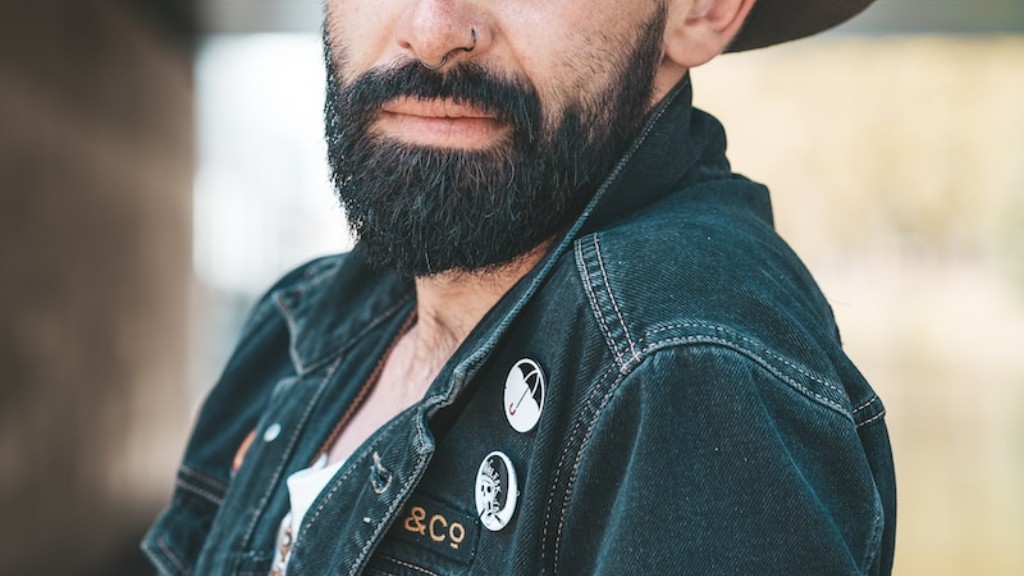What Factors Qualify Beard Growth
Beards, once seen as a sign of wisdom, have become more popular in recent years. Today, more and more men are learning the art of growing and trimming beards. But how long does it take to grow a beard and how fast does it re-grow? The answer depends on many factors.
Genetics plays a big part; the speed and pattern of beard growth varies from person to person. Ethnicity plays a role as well; for classic beard growth, Mediterranean and Nordic ethnic backgrounds are ideal. The rate of growth can also be affected by genetics, with some men’s hair growing faster and thicker.
Other factors such as nutrition, age, and stress levels can also impact the rate at which facial hair grows. Nutritional deficiencies, stress levels, and age can all have a slow and negative impact on the rate of facial hair growth. Research is looking at ways to improve hair growth and making some interesting findings into how proteins, a vitamin B complex, and omega 3 fatty acids, amongst other nutrients, help to promote beard growth.
So, the answer to the question ‘How fast does a beard grow back?’ is not straightforward. To understand the speed of beard re-growth, we need to take all the above factors into account.
Estimating the Growth Rate of a Beard
When it comes to estimating the growth rate of a beard, the most reliable source of information is often your barber. Professional barbers and groomers have extensive experience in recognizing the different beard growth patterns and can utilize their knowledge to guide you.
On average, a beard will grow half a millimeter per day, or, in other words, at a rate of around 15 centimeters per year. While the speed of growth can differ, so can the thickness of each strand of hair. Some men can have a patchy beard, where some parts of the face have little to no hair. Others can have thick and durable hair growth.
When inspecting a beard’s progress, it is important to remember two key points:
- The initial length of the beard you want to reach
- The care you put into the maintenance of the beard
If you want to grow out your beard, aim for the length you want and start trimming. Patience is key when it comes to achieving a full, healthy-looking beard; so cutting your beard too short or too often can slow down the process.
Grooming Approaches to Facilitate Growth
When it comes to speeding up beard growth, some grooming strategies can be beneficial. It is important to get into a routine, taking care to properly cleanse, exfoliate, and moisturize your beard. It is also important to use shampoos and conditioners specifically designed for beards and to apply beard oil.
The regular application of a beard-conditioning oil hydrates, softens, and moisturizes a beard, making it easier to comb and style the hair. There are also other products on the market, such as beard masks and growth stimulants, which are designed to nourish and encourage healthy beard growth.
It is also important to use the correct tools when trimming a beard. Purchasing quality sharp scissors and/or a trimmer is essential for achieving a well-groomed beard.
Scientific Evidence Supporting Beard Growth Practices
The scientific evidence to support beard growth techniques is still inconclusive. However, most experts agree that taking the right approach to your beard grooming and purchasing quality products are essential for the care of facial hair. Testimonies from current ‘beardy men’ suggest that taking the initiative to research and purchase quality beard-care products has been beneficial to their beard-growing journey.
It is currently unclear as to what approach is most beneficial to facilitate the growth of facial hair. As such, it is difficult to make definitive conclusions. For example, some swear by the wonder-working effects of biotin, while others argue that their diet is not to blame, as they have a well-rounded nutrition plan.
Ultimately, the answer to the question ‘How fast does a beard grow back?’ is inconclusive. Different approaches and strategies work for different people. The key to achieving the desired result is patience and persistence.
Effects of Hormones On Male Facial Hair Growth
When it comes to understanding how quickly a beard can regrow, it is important to understand the role of hormones in male facial hair growth. Both testosterone and dihydrotestosterone (DHT) are the two most influential androgens that affect hair growth. In men, testosterone is converted to DHT.
The amount of testosterone in the body affects how fast the hair grows, so it is important to evaluate each individual’s levels of testosterone before recommending a beard re-growth solution. High testosterone levels can encourage both a thicker and fuller looking beard, while low testosterone levels can affect beard growth.
In most cases, the body needs assistance to produce enough testosterone and DHT to ensure a healthy beard, which can be done using supplements or herbal remedies. There are a number of herbs known to influence male hormonal activity and can be used as part of a healthy beard growth regime.
Diet and Lifestyle Factors that Stimulate Beard Growth
A great beard starts with a good diet. Eating a balanced, nutritious diet can help stimulate beard growth. Incorporating foods rich in omega 3 fatty acids and zinc has been known to help promote full, healthy looking beards.
It is also important to ensure adequate hydration; drinking at least eight glasses of water a day helps skin and hair stay healthy, reducing the risk of flaking and dryness.
Stress can also be a major factor in slowing down beard growth. High levels of stress can cause hair to become brittle and thin, and can have an adverse effect on the rate at which facial hair grows. Reducing stress levels and attempting to live a more active and healthy lifestyle has been known to help stimulate beard growth, as it helps redistribute oxygen and nutrients to the hair follicles.
Different Products for Different Beards
Most men need to use different products for different beard lengths. Each length has its own needs and the best way to keep your beard in top shape is to use products designed for that specific length.
For short beards, like a Stubble, use products designed to tame and soften bristle-like hairs. For medium-length beards, use oils and balms to reduce skin dryness and promote shine. Longer beards should use thicker oil-based balms and waxes to provide a higher level of control and texture.
When it comes to styling a beard, experts recommend using a thinner wax and lighter cream. This allows a softer hold, so that the beard appears naturally fuller. Sebum-based products are also great for adding texture and volume.
Finding the Right Beard Care Regimen
When starting a beard care regimen, it is essential to find the right product to suit your type of beard and lifestyle. Many products are targeted specifically to beard growth, or for previously established facial hair. Each product can help with different results, such as repairing damage, adding texture, and improving overall beard health.
It is important to evaluate how a product works for your individual beard in order to make the most informed decision. Once you have established a personalized regimen, it is important to keep it consistent to maximise the potential of achieving the best results.
Knowing When to Trim a Beard
Knowing when and how to trim a beard is an essential part of any beard care regimen. Most men prefer to trim their beards when it grows to a certain length, or when it develops a less aesthetically appealing shape.
Trimming too often, or using the wrong tools, can be detrimental to a healthy beard. It is important to regularly check the general health of your facial hair and to make sure split ends are trimmed as they occur.
When trimming, it is important to use quality tools that can make a clean cut and handle the varying densities of facial hair. Specialised scissors and trimmers help maintain the desired shape and length.
Productivity Benefits of Growing a Beard
Growing a beard can have many positive impacts on productivity, mental and physical health, and wellbeing. Studies have revealed positive effects on mental clarity, self-confidence, and self-awareness as well as enhanced physical appearance.
Beards have been shown to be an effective measure against the sun’s harmful UV rays, trapping in moisture and providing light insulation against the elements. Many argue that growing a beard can help reduce asthma and eczema, while reducing signs of ageing.
Managing a beard also often forces a person to structure the day and to commit to a personal grooming routine. A healthy beard requires discipline and involves regularly washing, trimming, and moisturizing the facial hair. As such, it provides a great way to introduce structure into a daily routine.
Self Confidence and Beard Growth
The process of growing and managing a beard can be a journey of self-discovery and self-confidence. Instilling a sense of pride and confidence, a well-maintained beard can be empowering.
Looking and feeling good can also enhance a person’s productivity. As well as psychological wellbeing, looking good can help boost confidence and create social opportunities. Those with beards are seen to have a certain ‘je ne sais quoi’, and as such, a full, healthy-looking beard can be seen as a great investment in one’s overall wellbeing.


